Our work in additive manufacturing (AM) focuses on the following:
Modeling
AM processes of laser powder bed fusion (LPBF) and fused filament fabrication (FFF) are modeled. The different physics modeled are heat transfer, structural deformation, phase transformation, sintering, etc.
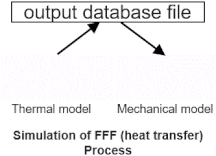 Computational techniques used:
Computational techniques used:
- Analytical models
- Finite element analysis (Abaqus)
- Cellular automata
- Computational fluid dynamics (OpenFOAM)
Quantities of interest of the additively manufactured part:
-
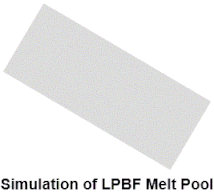 Melt pool size
Melt pool size - Part geometry
- Residual stress
- Sintering neck growth
- Microstructure
- Porosity/Voids
Experiments
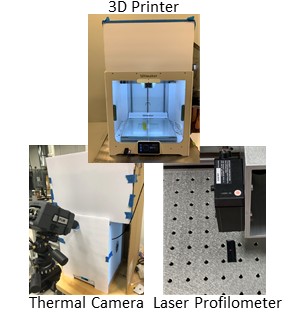 Experiments for fused filament fabrication AM process are conducted on desktop printing machine. The quality of the printed parts is measured using:
Experiments for fused filament fabrication AM process are conducted on desktop printing machine. The quality of the printed parts is measured using:
- Digital caliper
- Laser displacement sensor / profilometer
- Infrared thermal camera
- Microscopy
The experiments are used to quantify the error in model prediction, and also to validate the results from model prediction-based process design and control.
Machine Learning
 Physics-based models for AM are computationally intensive. The physical experiments for AM, especially metal AM, are also expensive due the high cost of raw materials. To overcome these challenges, we build machine learning (ML)-based surrogate models, using limited data from physics-based models and physical experiments. We use the ML models to support uncertainty quantification, process optimization, and process control.
Physics-based models for AM are computationally intensive. The physical experiments for AM, especially metal AM, are also expensive due the high cost of raw materials. To overcome these challenges, we build machine learning (ML)-based surrogate models, using limited data from physics-based models and physical experiments. We use the ML models to support uncertainty quantification, process optimization, and process control.
ML models pursued:
- Gaussian process (GP) models
- Deep neural networks (DNN)
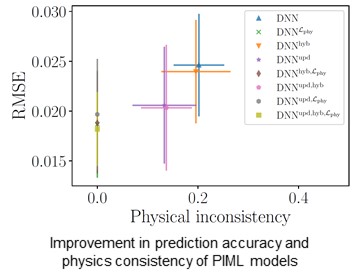 Physics-Informed Machine Learning (PIML)
Physics-Informed Machine Learning (PIML)
Physics-based models are limited by their computational complexity or incomplete physics. In contrast, machine learning models appear promising for complex systems, given adequate quality and quantity of data. The combined use of physics-based and machine learning models achieves more accurate and physically consistent predictions by leveraging the advantages of each method. Multiple PIML strategies and their combinations are investigated to improve the prediction accuracy and physics consistency of machine learning models.
Uncertainty Quantification
Variability is a significant challenge in AM. Since AM experiments are expensive, decisions such as process optimization and control cannot be achieved using trial-and-error experiments; thus a model-based approach is necessary. However, multiple sources of uncertainty such as input uncertainty, model parameter uncertainty, model errors, etc. propagate through multiple computational models and cause uncertainty in the quantity of interest. Our effort has developed a systematic methodology for uncertainty quantification, by properly aggregating the contributions of multiple types of uncertainty sources. Global sensitivity analysis is used to quantify the contribution of each uncertainty source to the uncertainty in quantity of interest. These results are utilized for process uncertainty management, and resource allocation for uncertainty reduction.
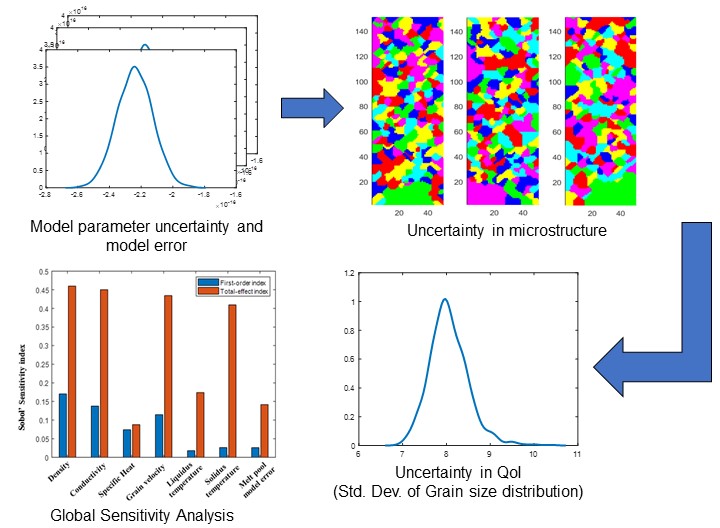
Process Optimization
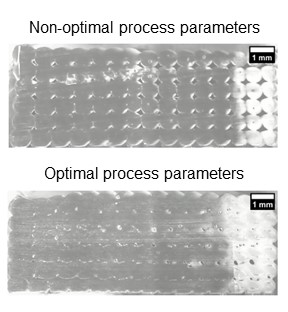
Model prediction corrected using experimental data is used for determining optimal process parameters in fused filament fabrication (FFF), instead of a physical experiments-based trial-and-error approach. Methods for optimization under uncertainty, such as reliability-based design optimization (RBDO), and robustness-based optimization (RBO) are studied.
Parts printed with optimal process parameters such as nozzle temperature, nozzle velocity, and layer thickness are found to have better geometric accuracy and mechanical properties, and also less voids and porosity.
Funding

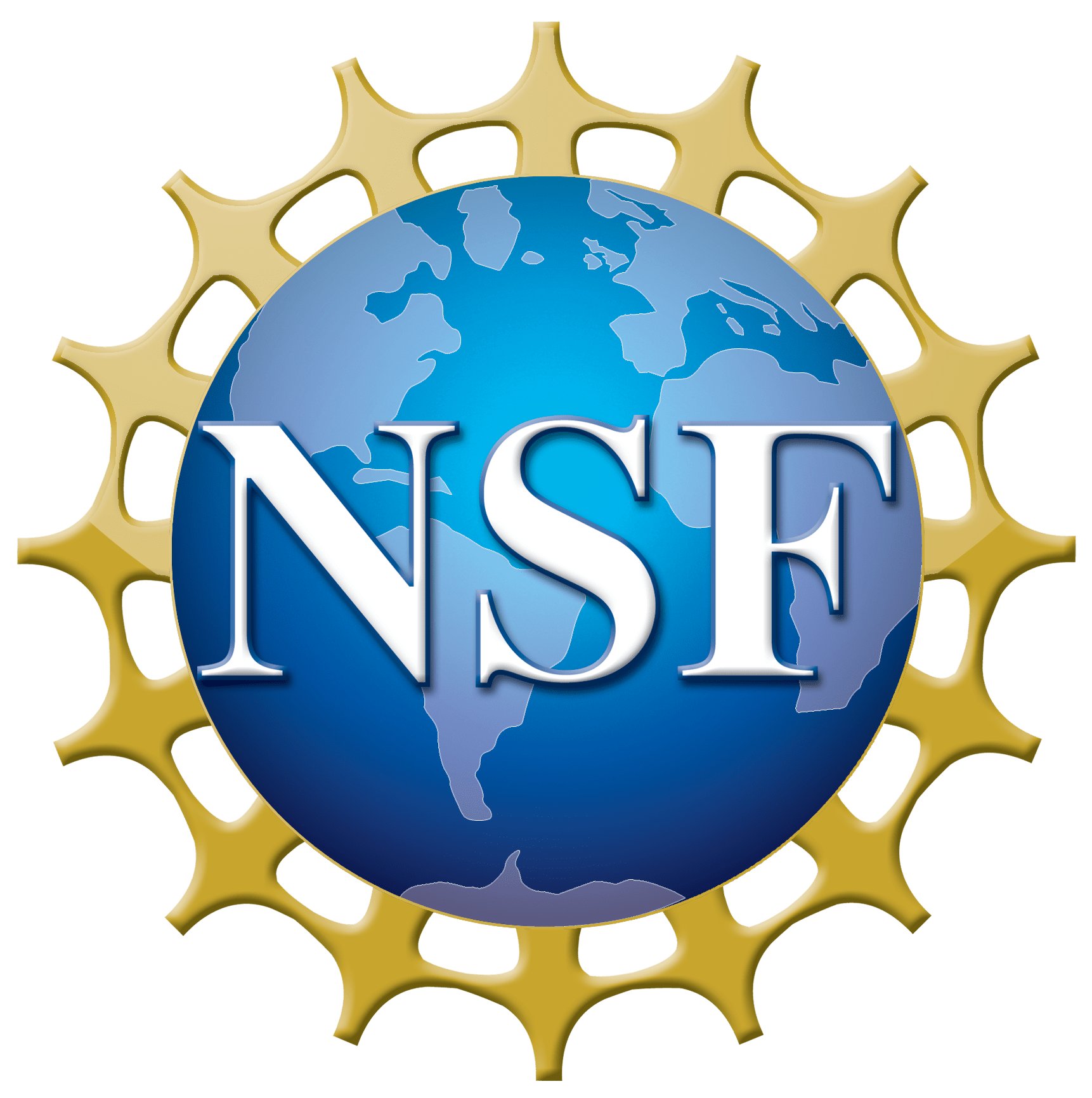
Current People
- Sankaran Mahadevan, Professor
- Pranav Karve, Research Assistant Professor
- Paromita Nath, Postdoctoral Fellow
- Berkcan Kapusuzoglu, Ph.D. Student
- Garrett Thorne, Staff Engineer
- Matthew Sato, Undergraduate Researcher
Past Members:
- Joseph Olson, Research Staff
Publications
15. Nath, P., & Mahadevan, S., "Probabilistic Digital Twin for Additive Manufacturing Process Design and Control," Journal of Mechanical Design, 2022.
14. Nath, P., Sato, M., Karve, P. and Mahadevan, S., "Multi-fidelity Modeling for Uncertainty Quantification in Laser Powder Bed Fusion Additive Manufacturing," Integrating Materials and Manufacturing Innovation, pp.1-20, 2022.
13. Mahadevan, S., Nath, P., & Hu, Z., "Uncertainty Quantification for Additive Manufacturing Process Improvement: Recent Advances," ASCE-ASME Journal of Risk and Uncertainty in Engineering Systems, Part B: Mechanical Engineering, Volume 8, Issue 1, 2022.
12. Hu, Z., Nannapaneni, S., & Mahadevan, S., "Special Issue on Uncertainty Quantification and Management in Additive Manufacturing," ASCE-ASME Journal of Risk and Uncertainty in Engineering Systems, Part B: Mechanical Engineering, Volume 8, Issus 1, 2022.
11. Kapusuzoglu, B., Nath, P., Sato, M., Mahadevan, S., & Witherell, P., "Multi-Objective Optimization Under Uncertainty of Part Quality in Fused Filament Fabrication," ASCE-ASME Journal of Risk and Uncertainty in Engineering Systems, Part B: Mechanical Engineering, Volume 8, Issue 1, 2022.
10. Kapusuzoglu, B., & Mahadevan, S., "Information fusion and machine learning for sensitivity analysis using physics knowledge and experimental data," Reliability Engineering & System Safety, Vol. 214, 2021 .
9. Nath, P., & Mahadevan, S., "Probabilistic predictive control of porosity in laser powder bed fusion," Journal of Intelligent Manufacturing, 2021.
8. Kapusuzoglu, B. & Mahadevan, S., "Physics-Informed and Hybrid Machine Learning in Additive Manufacturing: Application to Fused Filament Fabrication", Journal of the Materials, Metals and Minerals Society (JOM), 2020.
7. Kapusuzoglu, B., Sato, M., Mahadevan, S., & Witherell, P., "Process Optimization under Uncertainty for Improving the Bond Quality of Polymer Filaments in Fused Filament Fabrication", ASME Journal of Manufacturing Science and Engineering, 2020.
6. Nath, P., Olson, J. D., Mahadevan, S., & Lee, Y.T.T., “Optimization of fused filament fabrication process parameters under uncertainty to maximize part geometry accuracy”, Additive Manufacturing, Vol. 35, 2020.
5. Vohra, M., Nath, P., Mahadevan, S., & Lee, Y.T.T., “Fast surrogate modeling using dimensionality reduction in model inputs and field output: Application to additive manufacturing”, Reliability Engineering & System Safety, Vol. 201, 2020.
4. Wang, Z., Liu, P., Ji, Y., Mahadevan, S., Horstemeyer, M. F., Hu, Z., Chen, L., & Chen, L. Q., “Uncertainty Quantification in Metallic Additive Manufacturing Through Physics-Informed Data-Driven Modeling”, Journal of Manufacturing, Vol. 71, pp 2625–2634, 2019.
3. Nath, P., Hu, Z., & Mahadevan , S., “Uncertainty quantification of grain morphology in laser direct metal deposition”, Modelling and Simulation in Materials Science and Engineering, Vol. 27, No. 4, 2019.
2. Hu, Z. & Mahadevan, S., “Uncertainty quantification and management in additive manufacturing: current status, needs, and opportunities”, International Journal of Additive Manufacturing Technology, Vol. 93, pp 2855–2874, 2017.
1. Hu, Z., & Mahadevan, S, “Uncertainty quantification in prediction of material properties during additive manufacturing”, Scripta Materialia, Vol. 135, No. 1, pp 135-140, 2017.






